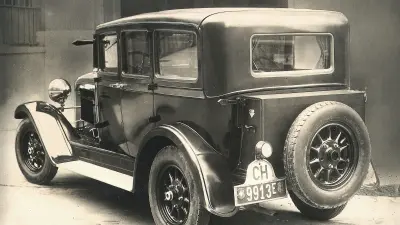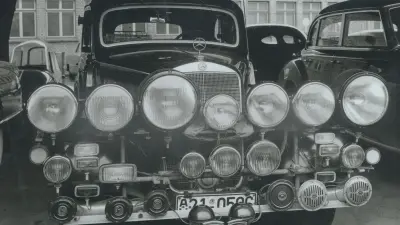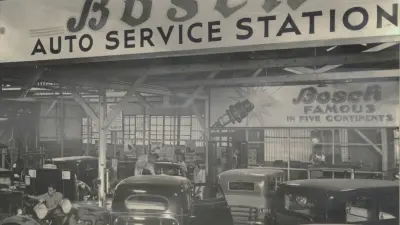Indicating the right direction: The Bosch trafficator

Until well after 1900, automobiles were a privilege reserved for a small number of wealthy enthusiasts and played no part in wider transport systems.
It was only after 1910 that the automobile became relevant as a means of transport. It opened up new opportunities and there was a range of sufficiently tried-and-tested models and variants that could complement the existing transport system. Between the two world wars, transport systems in Europe and North America underwent two major phases of motorization, with expansion interrupted only by the global economic crisis. During the twenties and thirties, the number of vehicles on the road grew enormously.
Rules of the road
Rules and regulations were needed to bring order to the ever-growing chaos on the roads. Signals became increasingly important. Paragraph 26 of the Motorized Traffic Regulations in Germany thus required that: “The driver must indicate to other persons, well in advance, his intention to stop by holding his arm up vertically, his intention to turn around and to leave the direction in which he had previously been driving by holding out his arm horizontally in the direction he wishes to change to; a mechanical device may also be used to give such indications.”
Showing which way to go

Clearly, the idea of a mechanical direction indicator, as provided for even in this early legislation, was by no means new when the engineering department at Bosch turned its attention to the problem in 1927/28. At the start of the 1920s, there had been metallic indicator arms with red “Bakelite eyes” that were operated via cables and a mechanical lever switch. Other manufacturers such as Carl Zeiss Jena had also already developed devices consisting of an internally lit capsule-like casing incorporating an arrow that was turned to face the desired direction of travel via two electromagnets. However, Bosch started from the view that the outline of the vehicle should change when a signal was given.
The Bosch direction indicator consisted of an electromagnet that, when activated via the direction indicator switch, caused the indicator arm to fold out of its housing. At the same time, the indicator arm would be lit up by a light bulb to ensure it was clearly visible in the dark. A louvred design on the rear of the indicator arm proved effective at ensuring drivers were not dazzled by the indicator light. Ultimately, even in those relatively early days, the aim was to improve traffic safety with innovations and ensure that the drawbacks of new technologies did not counteract any benefits. Such a scenario would have seriously damaged the success of the direction indicator.
The direction indicator disappears
However, necessity coupled with a practical solution won through and the technology became established worldwide. Whenever a truck, sedan, or sports car was taking a turn or changing direction, the little arm would fold out of its pillar with an orange light flashing at its tip.
From 1956, road traffic regulations in Germany stipulated that all new vehicles must be fitted with a flashing turn signal system, as we know them today. Similar regulations were introduced in all countries where motorization had taken hold.

Owners of old vehicles had until 1961 to upgrade their cars. The Bosch direction indicator disappeared from the streets. However, that in itself was not a problem — Bosch had been supplying its new turn signals since 1949. Although they are largely taken for granted today, they were unusual at the time. Instead of just two flashing lights, there were four, one at each corner of the vehicle.
It’s something of a mini-renaissance that cars today are often fitted with additional flashing lights on the exterior rear-view mirrors. From a distance, they look similar to their forebears — only the mirrors thankfully don’t fold away after turning.
Author: Dietrich Kuhlgatz



